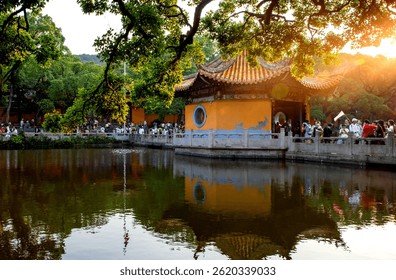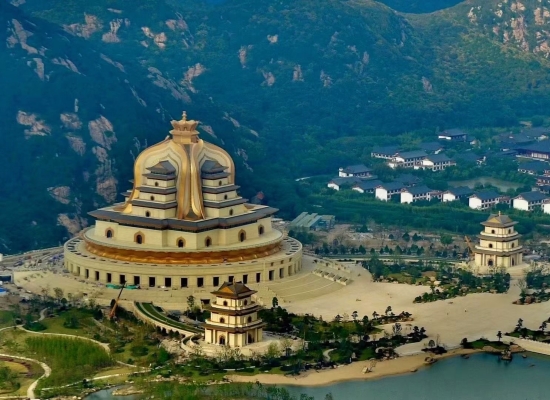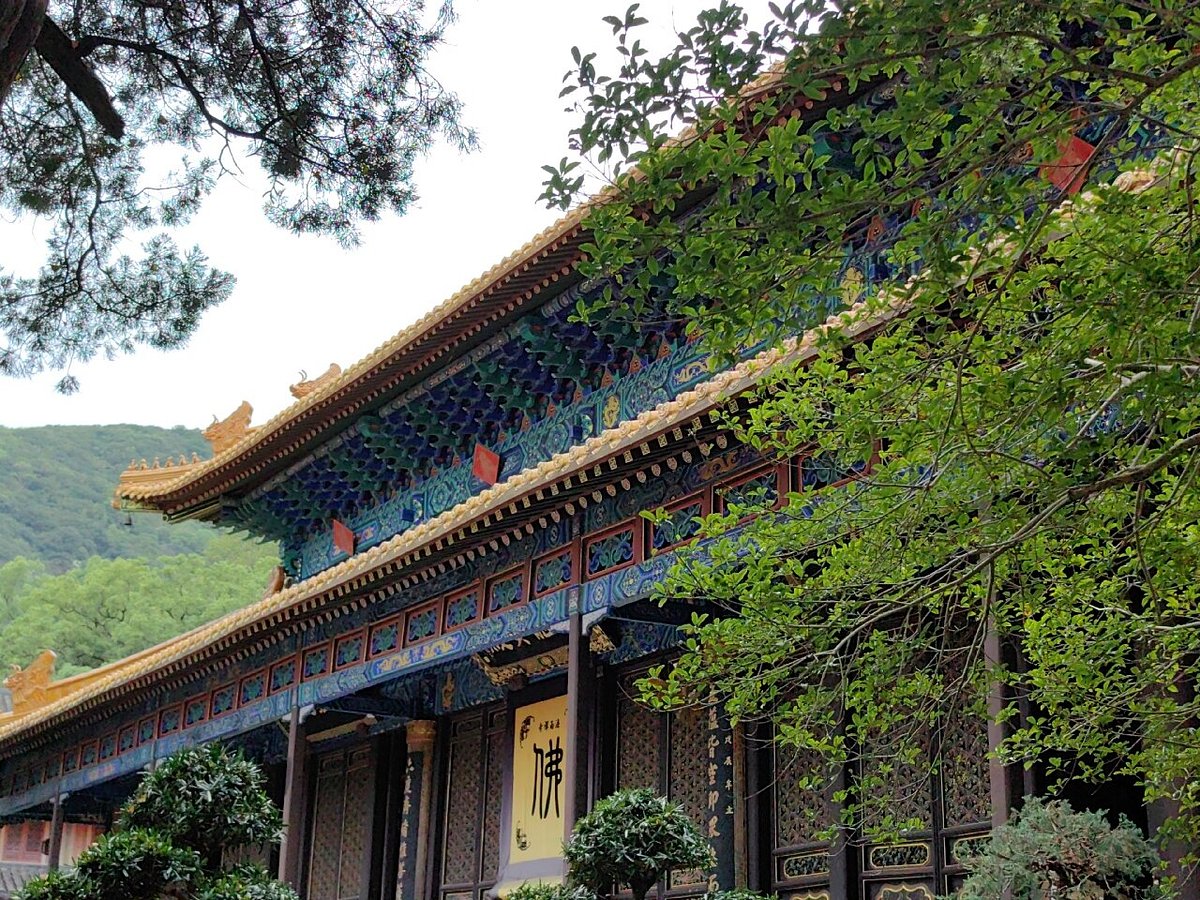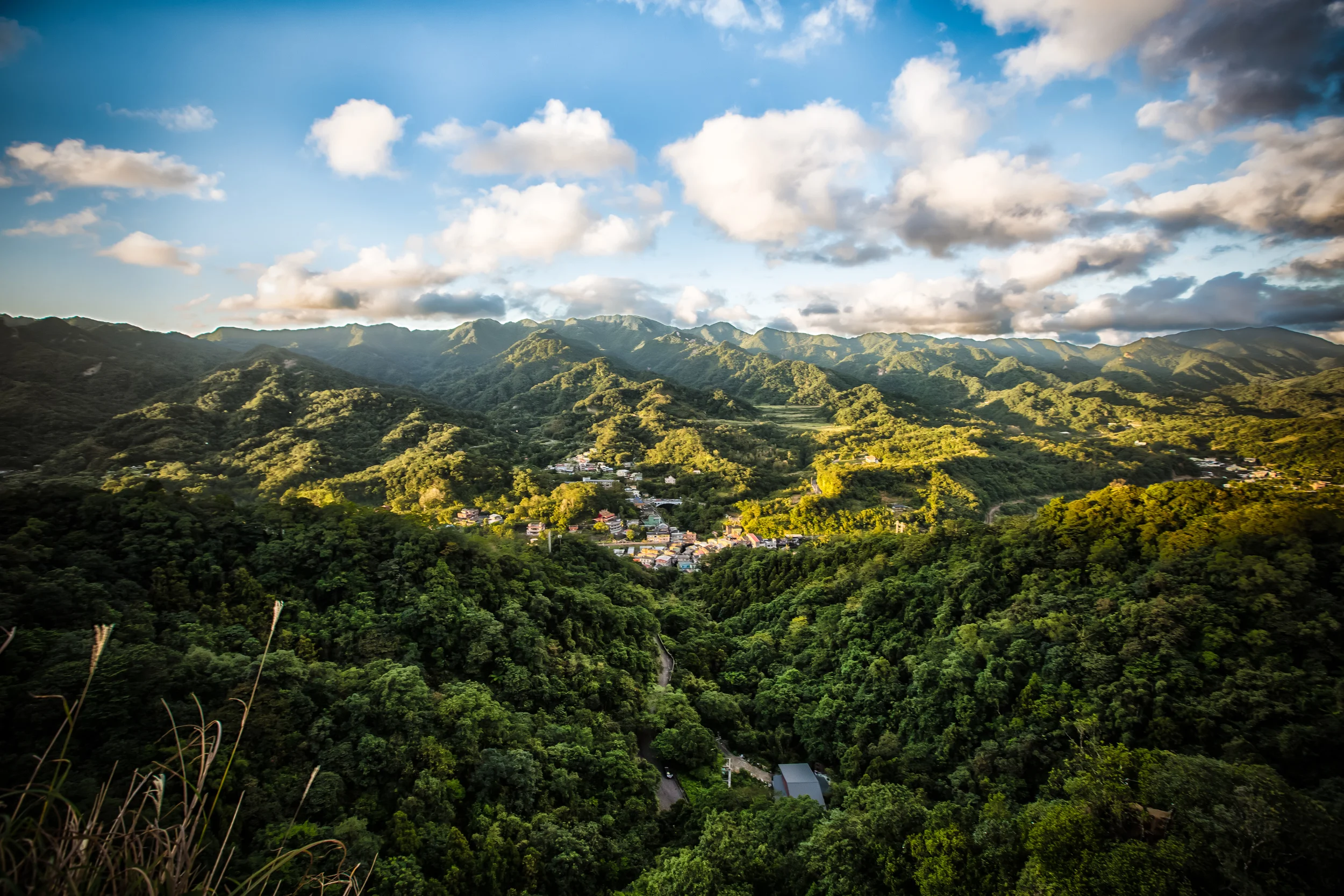7 Must-See Temples on Putuo Mountain That Will Take Your Breath Away
An Essential Guide to Visiting Putuo Mountain
Nestled amidst the serene waves of the East China Sea, Putuo Mountain is not just another picturesque destination; it is a sacred sanctuary dedicated to Guanyin, the Goddess of Mercy. Renowned as one of China’s Four Sacred Buddhist Mountains, this enchanting island offers visitors a harmonious blend of spirituality and stunning natural landscapes. As you ascend its lush trails, surrounded by ancient temples and towering bamboo groves, you will find yourself immersed in an atmosphere of peace and reflection that has attracted pilgrims for over a millennium.
In this essential guide to visiting Putuo Mountain, you will discover a treasure trove of experiences awaiting you. We will navigate through key attractions, including the majestic Puji Temple, the tranquil Zizhulin (Purple Bamboo Forest), and the awe-inspiring 33-meter Guanyin Statue that gazes serenely over the sea. You will also learn about the rich cultural history of the mountain, its architectural marvels, and the spiritual significance that continues to draw visitors from around the globe. Whether you seek adventure, enlightenment, or simply a tranquil escape from the hustle and bustle of modern life, Putuo Mountain promises a journey like no other. Prepare to explore this sacred haven, where every path leads to serenity and discovery.
In This Guide
- An Essential Guide to Visiting Putuo Mountain
- The Rich History and Legends of Putuo Mountain
- Main Highlights: What You Absolutely Can’t Miss
- Planning Your Visit: A Practical Guide
- Tickets: Prices, Booking, and Tips
- How to Get There: A Complete Transportation Guide
- Local Cuisine and Accommodation Nearby
- Frequently Asked Questions
- Final Thoughts on Your Trip
The Rich History and Legends of Putuo Mountain
The Sacred Roots of Putuo Mountain
Nestled within the lush landscapes of Zhoushan Island in Zhejiang Province, Putuo Mountain has been a beacon of spiritual significance for over a millennium. Revered as one of China’s Four Sacred Buddhist Mountains, this enchanting destination is dedicated to Guanyin, the Goddess of Mercy. The mountain’s rich history is intertwined with the evolution of Buddhism in China and the cultural expressions that arose around it.
Early Foundations: A Spiritual Sanctuary
The origins of Putuo Mountain can be traced back to the Tang Dynasty (618–907 AD), when it began to emerge as a significant site of Buddhist worship. Pilgrims from across the country made their way to the island, drawn by the belief that Guanyin resided here. The earliest recorded temple, the Unwilling-to-go Kwan-yin Temple, is said to have been built during this period, marking the beginning of a long-standing tradition of reverence and pilgrimage.
Flourishing in the Dynasties
Throughout the Song (960–1279), Yuan (1271–1368), Ming (1368–1644), and Qing (1644–1912) Dynasties, the number of temples on Putuo Mountain rapidly increased. At its peak, the mountain was home to 82 temples and 128 monastic huts, accommodating up to 4,000 monks and nuns. Each temple, including the renowned Puji Temple and Fayu Temple, showcases unique architectural styles and artistic elements that reflect the era in which they were built.
The architectural grandeur of these temples, with their intricate carvings and serene courtyards, has inspired countless poets, artists, and scholars. The tranquil environment, combined with the mountain’s scenic beauty, led to a flourishing of cultural expression that celebrated both nature and spirituality.
Legends of Guanyin: Tales of Compassion
One of the most captivating aspects of Putuo Mountain is its association with legends surrounding Guanyin. According to popular belief, Guanyin once descended from the heavens to save a ship full of distressed sailors during a violent storm. As she calmed the waters, her compassion inspired the establishment of the temples dedicated to her on Putuo Mountain. This narrative not only emphasizes Guanyin’s role as a protector but also reinforces the mountain’s status as a spiritual refuge.
Another legend tells of a monk who, while meditating on the mountain, suddenly encountered Guanyin. She bestowed upon him a sacred pearl, symbolizing enlightenment and wisdom. This encounter is said to have granted him extraordinary powers, allowing him to heal the sick and protect the vulnerable, further solidifying the mountain as a center of spiritual healing and benevolence.
Modern Pilgrimage and Cultural Heritage
In contemporary times, Putuo Mountain continues to attract pilgrims and tourists alike, drawn by its spiritual allure and breathtaking landscapes. Today, visitors can explore the mountain’s temples, engage in meditation, and participate in traditional Buddhist ceremonies. The annual pilgrimage season witnesses thousands flocking to the mountain, reaffirming its significance as a spiritual sanctuary.
Efforts to preserve the cultural heritage of Putuo Mountain have ensured that the ancient traditions and architectural splendor remain intact. The mountain is not only a testament to the enduring practices of Buddhism but also a symbol of the harmonious relationship between nature and spirituality.
A Journey Through Time
As you explore Putuo Mountain, you are not merely visiting a physical location; you are stepping into a rich tapestry of history and legend. Each temple, each winding path, and each tranquil grove tells a story of devotion, compassion, and the quest for enlightenment. This sacred mountain invites travelers to reflect on their own journeys while offering a glimpse into the profound spiritual legacy of one of China’s most cherished destinations.

Putuo Mountain.
Main Highlights: What You Absolutely Can’t Miss
Puji Temple: The Heart of Spirituality
As the largest and most significant temple on Putuo Mountain, Puji Temple is a must-visit for anyone seeking a deep connection with Buddhist culture. This architectural marvel, steeped in history, boasts a grand main hall adorned with stunning statues of Guanyin, the Goddess of Mercy. Stroll through its tranquil courtyards, where ancient trees stand watch over intricate stone carvings. For a breathtaking experience, ascend to the elevated points within the temple for panoramic views of the East China Sea.
Practical Tip: Arrive early in the morning to enjoy the serene atmosphere before the crowds gather. Don’t forget your camera for capturing the stunning vistas!
Fayu Temple: A Retreat in Nature
Nestled gracefully on the slopes of Mount Putuo, Fayu Temple offers an ideal escape for those looking to immerse themselves in tranquility. Known for its elegant architecture and lush surroundings, this temple features beautifully preserved halls adorned with exquisite carvings and ancient inscriptions. The serene environment invites visitors to meditate and reflect amidst the natural beauty that envelops this sacred site.
Practical Tip: Take your time exploring the peaceful courtyards; you may encounter monks engaging in prayer or meditation, adding to the spiritual ambiance.
Cihang Temple: Serenity by the Sea
Perched near the coast, Cihang Temple (also known as the South Sea Guanyin Temple) is a stunning blend of spiritual and coastal beauty. With its traditional Buddhist architecture and peaceful courtyards, this temple provides an idyllic setting for reflection. The sweeping views of the East China Sea create a picturesque backdrop, making it a perfect spot for quiet contemplation and photography.
Practical Tip: Visit during sunset for a magical experience; the golden hues reflecting on the sea are simply unforgettable.
Guanyin Statue: A Symbol of Compassion
Standing tall at 33 meters, the Guanyin Statue is an awe-inspiring sight that embodies the spirit of compassion and mercy. Positioned prominently overlooking the ocean, this bronze statue draws visitors from all corners of the globe. The intricate details of the sculpture are remarkable, and the serene ambiance around it encourages visitors to pause, reflect, and connect with the spiritual essence of Mount Putuo.
Practical Tip: There are several viewpoints around the statue; explore these for unique angles and stunning photographs.
Zizhulin (Purple Bamboo Forest): A Nature Lover’s Paradise
Escape into the tranquility of Zizhulin, or the Purple Bamboo Forest, where dense groves of bamboo create a peaceful retreat. Meandering paths lead you through this natural haven, adorned with small Buddhist statues and meditation spots. The gentle rustling of bamboo leaves and dappled sunlight filtering through the canopy enhance the serene atmosphere, making it an ideal place for quiet reflection or a leisurely stroll.
Practical Tip: Bring a journal or a book; the peaceful surroundings are perfect for unwinding and soaking in the natural beauty.
Nantianmen (South Heaven Gate): Gateway to the Sky
Nantianmen, or the South Heaven Gate, is a striking entrance that offers breathtaking panoramic views of Mount Putuo and the surrounding sea. This site combines traditional architectural beauty with the natural landscape, making it a favorite spot for visitors eager to capture stunning photographs. The gentle hike to the gate is rewarding, providing a peaceful escape as you take in the majestic vistas.
Practical Tip: Plan your visit during the early morning or late afternoon to avoid the heat and enjoy cooler temperatures while hiking.
Sea and Sand Attractions: Coastal Beauty Unleashed
Discover the serene Baibu Sand Beach, a pristine stretch of shoreline perfect for a leisurely walk or quiet reflection. The rhythmic sound of waves crashing against the shore creates an enchanting atmosphere, while the scenic coastal walkways and cliffside paths offer dramatic views of the East China Sea. This area harmoniously blends the island’s natural beauty with spiritual tranquility, making it an essential stop on your journey.
Practical Tip: Bring a picnic to enjoy on the beach, allowing you to relax and soak up the sun while surrounded by breathtaking ocean views.
With these highlights, Putuo Mountain promises a captivating blend of spirituality, natural beauty, and cultural richness that will leave a lasting impression on every traveler.

Putuo Mountain.
Planning Your Visit: A Practical Guide
Best Time to Visit
To fully appreciate the stunning landscapes and spiritual atmosphere of Putuo Mountain, plan your visit during the spring (April to June) or autumn (September to November). During these months, the weather is mild, with temperatures ranging from 15°C to 25°C (59°F to 77°F), making it ideal for outdoor exploration. Additionally, spring brings vibrant blooms, while autumn showcases beautiful foliage. Avoid the peak summer months (July and August) when the island can be crowded with tourists, and temperatures may soar.
Recommended Itinerary
Day 1: Arrival and Exploration
– Morning: Arrive at Putuo Mountain via ferry from Zhoushan City. Check into your accommodation.
– Afternoon: Visit Puji Temple, the largest on the mountain, to marvel at its impressive architecture and serene atmosphere.
– Evening: Enjoy a peaceful stroll along Baibu Sand Beach as the sun sets over the East China Sea.
Day 2: Cultural Immersion
– Morning: Hike to Fayu Temple, taking in the scenic views along the way.
– Afternoon: Explore Cihang Temple, where you can relax and reflect by the sea.
– Evening: Return to your accommodation and experience a traditional Buddhist vegetarian meal at a local temple.
Day 3: Nature and Reflection
– Morning: Visit Zizhulin (Purple Bamboo Forest) for a tranquil nature walk among bamboo groves.
– Afternoon: Head to Nantianmen (South Heaven Gate) for breathtaking panoramic views of the island and ocean.
– Evening: Depart Putuo Mountain, taking with you memories of this serene and sacred place.
Photography Tips
- Golden Hour: Capture the best light by photographing during sunrise and sunset. The soft hues of the sky against the temples and ocean create stunning images.
- Wide-Angle Lens: Bring a wide-angle lens to capture the grandeur of the temples and expansive coastal views.
- Details Matter: Don’t forget to photograph the intricate details of temple architecture and the serene natural surroundings, such as the bamboo forests and coastal cliffs.
- Respectful Shots: Remember that this is a sacred site; be respectful while taking photos, especially in areas where worshippers are present.
What to Wear
Dress comfortably and in layers, as the weather can change throughout the day. Opt for:
– Lightweight Clothing: Breathable fabrics are ideal for warm afternoons.
– Comfortable Footwear: Sturdy walking shoes are a must for exploring the temples and hiking trails.
– Sun Protection: Don’t forget a hat and sunglasses, as the sun can be strong, especially during midday.
– Modest Attire: As a sign of respect in the temples, wear modest clothing (shoulders and knees covered).
Insider Tips
- Visit Early: Arrive at popular attractions like Puji Temple early in the morning to avoid crowds and enjoy a more peaceful experience.
- Explore Side Trails: Venture off the main paths to discover hidden temples and lesser-known scenic spots, offering unique views and fewer tourists.
- Engage with Monks: If you see monks in the area, respectfully approach them; they may share insights about the local culture and Buddhism.
- Local Cuisine: Try the local specialties, such as seafood and vegetarian dishes served at nearby eateries; they offer a taste of the island’s culinary offerings.
- Stay Overnight: Consider spending at least one night on the island to fully embrace the tranquil atmosphere and enjoy evening rituals at the temples.
With its rich cultural heritage and stunning natural beauty, Putuo Mountain is truly a gem for any traveler seeking both adventure and serenity. Enjoy your journey!

Putuo Mountain.
Tickets: Prices, Booking, and Tips
When planning your visit to the enchanting Putuo Mountain, it’s important to be informed about ticket prices and booking procedures to ensure a smooth experience. Below is a detailed overview of ticket types, pricing, and the inclusions for your visit.
| Ticket Type | Price (CNY) | Includes |
|---|---|---|
| Adult Admission | 160 | Access to all main attractions and temples |
| Children (under 1.2m) | Free | Access to all main attractions and temples |
| Students (with ID) | 80 | Access to all main attractions and temples |
| Seniors (over 60) | 80 | Access to all main attractions and temples |
Booking Information
To ensure you secure your spot and avoid any last-minute hassles, it’s highly recommended to book your tickets in advance. Tickets can be purchased through official tourism websites, local travel agencies, or at the entry points to the mountain, but online booking is advisable for convenience and to often find the best deals.
Tips for a Seamless Visit
-
Plan Ahead: Putuo Mountain attracts many visitors, especially during weekends and holidays, so booking ahead can help you avoid long queues.
-
Check Opening Hours: The mountain is generally open from 8:00 a.m. to 6:00 p.m. Be sure to arrive early to make the most of your day exploring the temples and scenic spots.
-
Consider Guided Tours: If you’re unfamiliar with the area or prefer a more structured experience, consider booking a guided tour that includes transportation, which can also streamline the ticketing process.
-
Weather Preparedness: Check the weather forecast and dress accordingly; comfortable footwear is essential for the mountain trails.
Visiting Putuo Mountain promises a unique blend of spirituality and natural beauty, making it a memorable journey. Book your tickets early, and immerse yourself in this sacred site!
How to Get There: A Complete Transportation Guide
From the Nearest Major City
Arriving from Shanghai
If you’re traveling from Shanghai, the most efficient way to get to Putuo Mountain is to first head to Ningbo.
- By Train:
- Duration: Approximately 2 hours.
- Cost: Around 50-150 RMB depending on the train class.
- Departure Stations: Trains depart from Shanghai Hongqiao Railway Station or Shanghai Railway Station.
-
Arrival Station: Ningbo Railway Station.
-
From Ningbo to Zhoushan:
- By Bus:
- Duration: About 1.5 hours.
- Cost: Approximately 35 RMB.
- Departure Point: Buses to Zhoushan leave from Ningbo South Bus Station regularly.
-
By Taxi or Rideshare:
- Duration: 1 hour.
- Cost: Typically around 150-200 RMB.
-
Ferry to Putuo Mountain:
- From Zhoushan City (Shenjiamen Port):
- Duration: 40 minutes to 1 hour.
- Cost: Approximately 30-50 RMB.
- Ferry Schedule: Ferries run frequently, but it’s wise to check the schedule in advance as it can vary seasonally.
Arriving from Hangzhou
Travelers from Hangzhou can also reach Putuo Mountain easily:
- By Train to Ningbo:
- Duration: Approximately 2 hours.
- Cost: 40-120 RMB.
- Departure Stations: Hangzhou East Railway Station or Hangzhou Railway Station.
-
Arrival Station: Ningbo Railway Station.
-
Bus to Zhoushan:
-
Follow the same route as mentioned above from Ningbo.
-
Ferry to Putuo Mountain:
- Similar ferry details as from Ningbo.
Getting Around the Scenic Area
Once you arrive on Putuo Mountain, the best way to explore this sacred site is on foot, as many attractions are interconnected via scenic walking paths. Here are some tips on navigating the area:
On Foot
- Walking Trails: The mountain has well-maintained trails that lead to all major attractions, including Puji Temple, Fayu Temple, and the Guanyin Statue. Be prepared for some uphill walks, but the views are worth the effort!
- Signage: There are clear signposts in both Chinese and English, making it easier for international travelers to find their way.
Public Transport on the Island
- Local Buses: There are local buses that connect key spots on the island, but they may not operate frequently. It’s advisable to check the schedule or ask locals about the timings.
- Electric Carts: For those who prefer not to walk, electric carts are available for hire around major attractions for a small fee.
Tips for Travelers
- Wear Comfortable Shoes: Given the walking involved, comfortable footwear is essential.
- Stay Hydrated: Bring water, especially during warmer months, as you may find limited vendors along the trails.
- Plan Your Route: Download a map of the area or use a translation app to help communicate with locals, should you need assistance.
By following this transportation guide, you’ll be well-equipped to navigate your way to and around the enchanting Putuo Mountain, immersing yourself in its spiritual and natural beauty.

Putuo Mountain.
Local Cuisine and Accommodation Nearby
When visiting the enchanting Putuo Mountain, not only will you immerse yourself in its serene landscapes and spiritual atmosphere, but you’ll also have the opportunity to savor some delightful local cuisine and find comfortable accommodations to suit your travel style.
Culinary Delights
1. Seafood Specialties
Being an island destination, Putuo Mountain is renowned for its fresh seafood. One dish you must try is Braised Fish with Soy Sauce, where locally caught fish is simmered to perfection, highlighting the flavors of the sea. Another popular choice is Steamed Crab, famed for its tender meat and rich, sweet flavor.
2. Vegetarian Buddhist Cuisine
In keeping with the spiritual essence of the area, many restaurants offer Buddhist vegetarian dishes. Try the Stir-fried Seasonal Vegetables seasoned with fragrant garlic and soy sauce, or the Buddha’s Delight, a colorful medley of tofu, mushrooms, and greens that is both nutritious and satisfying.
3. Putuo Mountain Noodles
Local noodles, known as Putuo Noodles, are a must-try. These chewy noodles are often served in a light broth with fresh vegetables and a hint of spice, embodying the simplicity and essence of the region’s culinary tradition.
4. Bamboo Shoots
Don’t miss the chance to sample Stir-fried Bamboo Shoots, a seasonal delicacy that reflects the region’s agricultural bounty. The crunchy texture and subtle flavor make it a perfect complement to any meal.
Where to Stay
Whether you’re looking for luxurious amenities, boutique charm, or budget-friendly options, Putuo Mountain has accommodations to fit every traveler’s needs.
Luxury Accommodation
For those seeking indulgence, the Shengsi Island Resort offers opulent rooms with stunning ocean views, a full-service spa, and gourmet dining options. This resort combines comfort with exquisite service, making it the perfect base for exploring the area.
Boutique Stay
If you prefer a more intimate atmosphere, consider the Putuo Mountain Boutique Hotel. This charming hotel features beautifully decorated rooms inspired by traditional Chinese aesthetics, offering personalized service and a cozy ambiance. It’s an ideal spot for travelers looking to experience local culture while enjoying modern comforts.
Budget-Friendly Option
For budget-conscious travelers, the Putuo Mountain Youth Hostel is an excellent choice. This hostel provides basic yet comfortable accommodations with a friendly atmosphere. It’s a great place to meet fellow travelers and exchange stories while keeping costs down.
No matter where you choose to dine or stay, Putuo Mountain promises an enriching experience that harmonizes spirituality, culinary delight, and comfortable lodging. Enjoy your journey!

Putuo Mountain.
Frequently Asked Questions
Frequently Asked Questions about Putuo Mountain
1. Is Putuo Mountain suitable for children and the elderly?
Yes, Putuo Mountain is generally suitable for families with children and elderly visitors. The trails are well-maintained, and there are plenty of flat paths and resting areas. However, some parts may require moderate walking, so ensure that everyone in your group is comfortable with light hiking.
2. Are there English signs and information available?
Yes, many signs around Putuo Mountain are in both Chinese and English, especially at major attractions like Puji Temple and Fayu Temple. Additionally, some staff members at the temples and tourist centers can communicate in English, making it easier for international travelers to navigate.
3. How much time should I plan to spend at Putuo Mountain?
A visit to Putuo Mountain typically takes a full day if you want to explore the main attractions, such as the temples and scenic spots. If you prefer a more leisurely experience or want to hike some of the trails, consider extending your visit to two days.
4. What is the best time of year to visit Putuo Mountain?
The best time to visit is during spring (April to June) and autumn (September to November) when the weather is mild, and the scenery is particularly beautiful. Summer can be hot and humid, while winter may be chilly but offers a serene atmosphere.
5. Are there any entrance fees for the temples?
Most temples on Putuo Mountain do not charge an entrance fee, but some may ask for a small donation. It’s always a good idea to check in advance if you plan to visit specific temples or attractions.
6. What should I wear when visiting Putuo Mountain?
Comfortable footwear is essential, as you’ll be doing a fair amount of walking on uneven terrain. Dress in layers to accommodate changes in temperature throughout the day, and consider wearing modest clothing when visiting temples, as a sign of respect.
7. Is public transportation available on Putuo Mountain?
Yes, there are shuttle buses and local taxis available for getting around the mountain and between major attractions. Additionally, walking is a popular way to explore, as many sites are within a short distance from each other.
8. Can I find dining options on Putuo Mountain?
Yes, there are several dining options available near the major temples and scenic spots. You can find local restaurants serving vegetarian Buddhist cuisine, as well as small cafes and shops offering snacks and refreshments. It’s a good idea to try the local specialties while you’re there!
Final Thoughts on Your Trip
As your journey to Putuo Mountain comes to a close, you will undoubtedly carry with you the tranquil essence of this sacred haven. The serene paths lined with ancient temples, the breathtaking vistas of the East China Sea, and the gentle whispers of the bamboo forests create an atmosphere that is both meditative and rejuvenating. Here, amidst the rich tapestry of Buddhist heritage, you’ve not only explored stunning landscapes but also embraced a deeper connection to spirituality and culture.
Whether it was standing in awe before the towering Guanyin statue, wandering through the peaceful courtyards of Puji and Fayu Temples, or simply soaking in the coastal beauty at Baibu Sand Beach, each moment spent on Mount Putuo has been an invitation to reflect and recharge.
As you leave this enchanting island, let the peace you found here resonate in your heart, reminding you of the beauty of stillness and the profound wisdom of compassion. We encourage you to carry these experiences with you, sharing the spirit of Putuo Mountain wherever your travels may lead next. Safe travels and may your next adventure be just as inspiring!